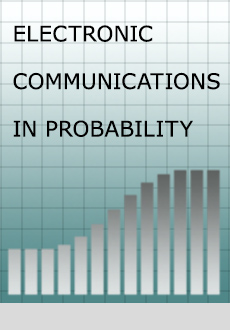Abstract
We investigate the number of holes created by an “earthworm” moving on the two-dimensional integer lattice. The earthworm is modeled by a simple random walk. At the initial time, all vertices are filled with grains of soil except for the position of the earthworm. At each step, the earthworm pushes the soil in the direction of its motion. It leaves a hole (an empty vertex with no grain of soil) behind it. If there are holes in front of the earthworm (in the direction of its step), the closest hole is filled with a grain of soil. Thus the number of holes increases by 1 or remains unchanged at every step. We show that the number of holes is at least after n steps.
Funding Statement
KB’s research was supported in part by Simons Foundation Grants 506732 and 928958. DS is supported by a JSPS Grant-in-Aid for Early-Career Scientists, 18K13425 and JSPS KAKENHI Grant Number 17H02849, 18H01123, 21H00989, 22H01128 and 22K03336.
Acknowledgments
We are grateful to the anonymous Referee for pointing out the connection of our argument to “tan points” in [2].
Citation
Krzysztof Burdzy. Shi Feng. Daisuke Shiraishi. "On the size of earthworm’s trail." Electron. Commun. Probab. 28 1 - 9, 2023. https://doi.org/10.1214/23-ECP556
Information





